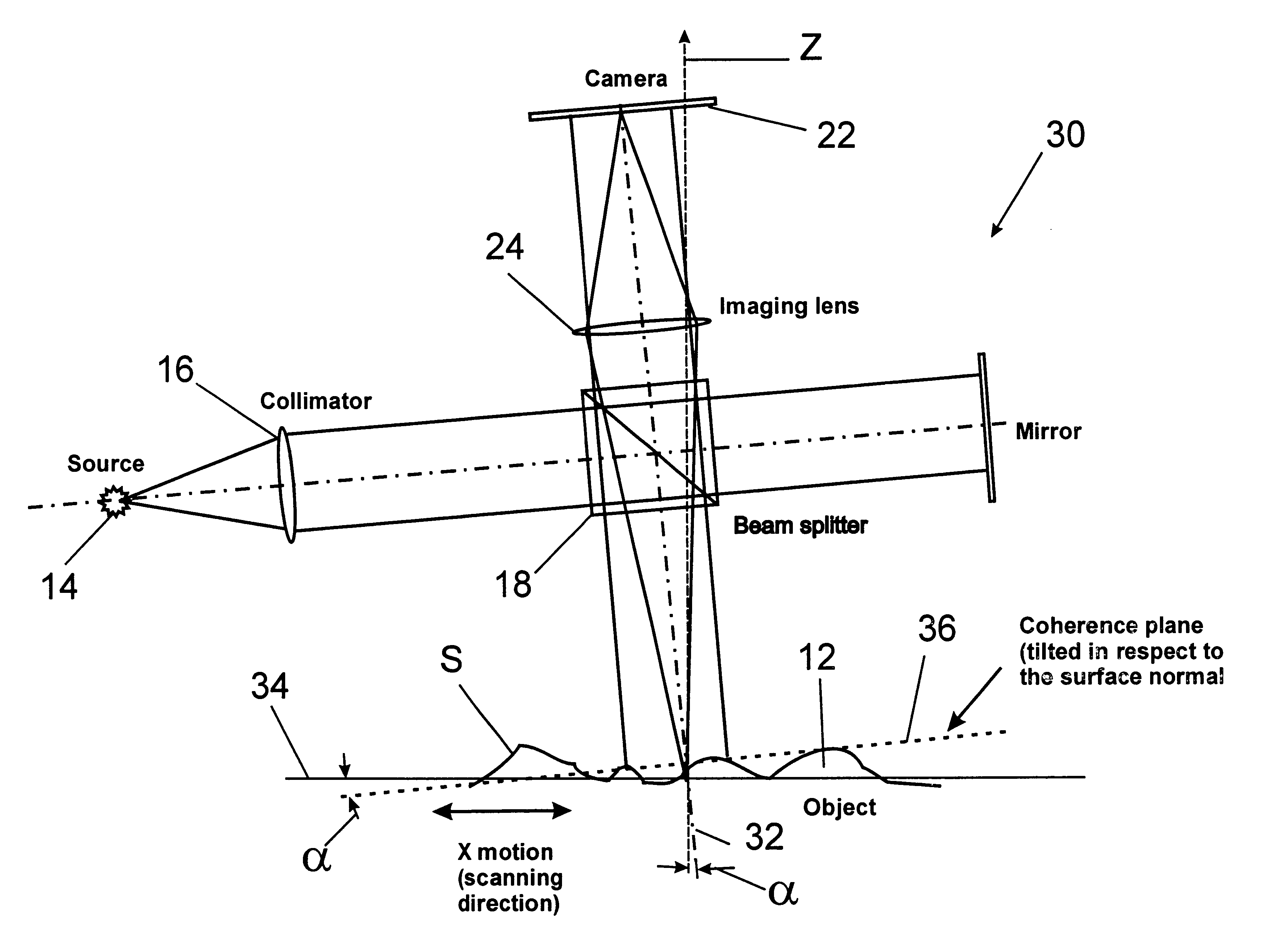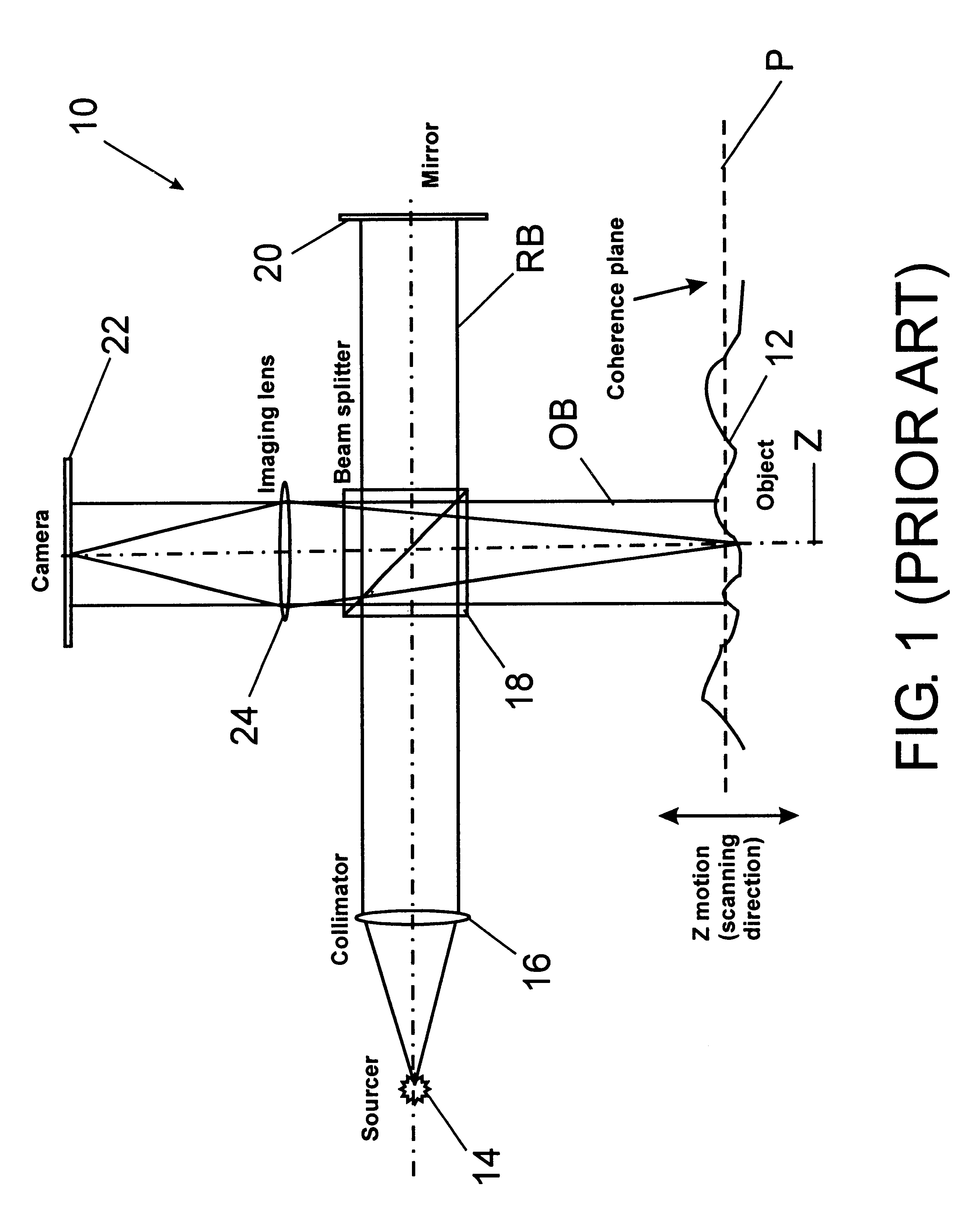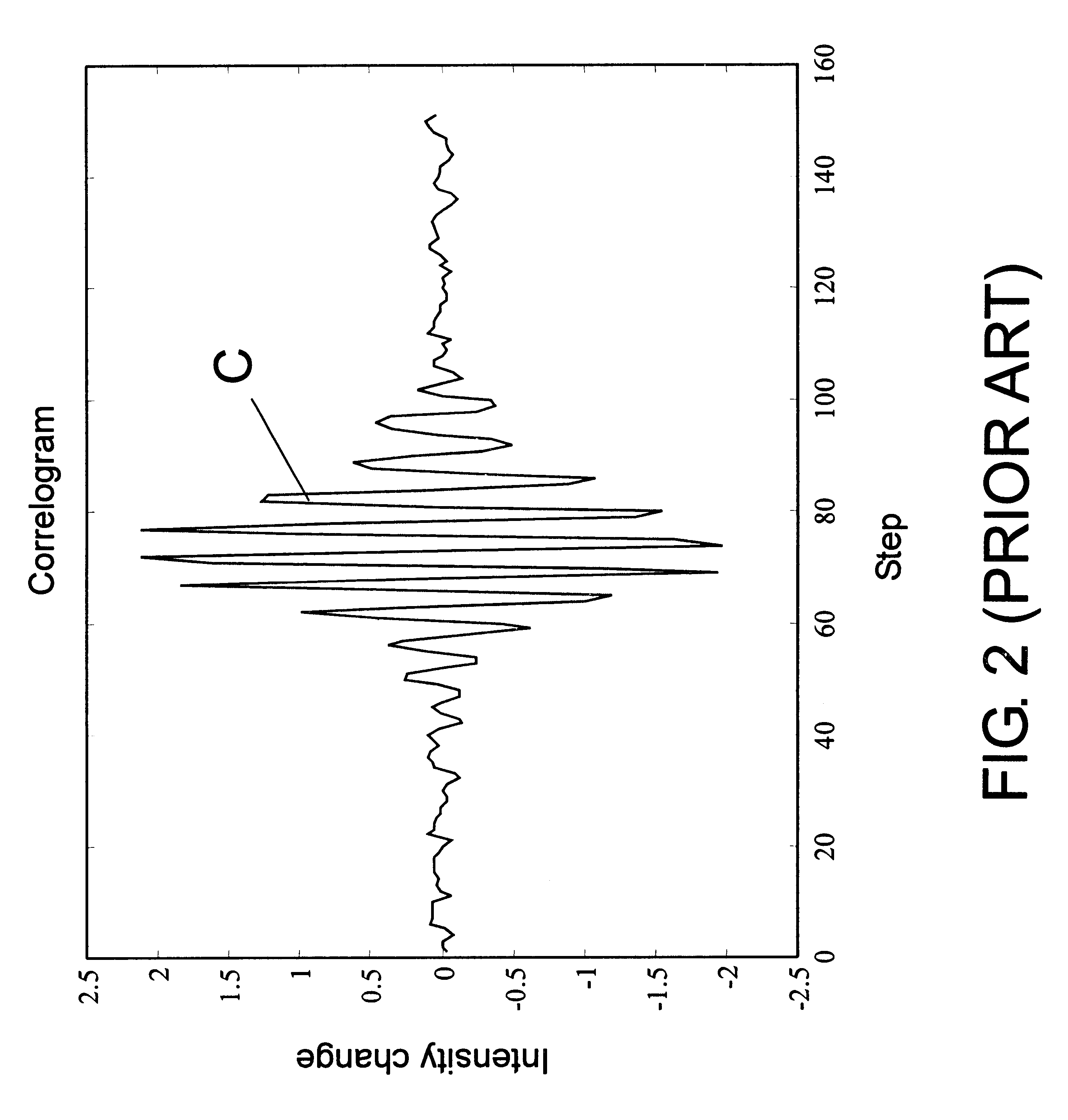Lateral-scanning interferometer with tilted optical axis
an interferometer and tilting technology, applied in the field of interferometry, can solve the problems of mechanical undesirable shift-and-hold motion of the stepping method, slowing down the data acquisition process, and no longer being generally preferred in the industry
- Summary
- Abstract
- Description
- Claims
- Application Information
AI Technical Summary
Problems solved by technology
Method used
Image
Examples
Embodiment Construction
The invention is based on the realization that the effective testing range of an interferometer can be expanded by continuously scanning a tilted sample surface or fixture across the objective's field of view. By tilting the objective's optical axis with respect to the sample stage and by scanning the sample across the tilted coherence plane of the instrument, the resulting relative vertical scan produces a sequence of interferograms equivalent to conventional vertical-scanning interferometry. The invention is described in terms of white-light interferometric apparatus, but it is understood that any broadband light suitable to practice VSI interferometry would be appropriate for the invention. Moreover, as one skilled in the art would readily understand, the invention could also be adapted for implementation to PSI measurements, both with narrow- and broad-bandwidth light, subject only to successful resolution of the 2.pi. ambiguity problem associated with all PSI measurements. Ther...
PUM
 Login to View More
Login to View More Abstract
Description
Claims
Application Information
 Login to View More
Login to View More - R&D
- Intellectual Property
- Life Sciences
- Materials
- Tech Scout
- Unparalleled Data Quality
- Higher Quality Content
- 60% Fewer Hallucinations
Browse by: Latest US Patents, China's latest patents, Technical Efficacy Thesaurus, Application Domain, Technology Topic, Popular Technical Reports.
© 2025 PatSnap. All rights reserved.Legal|Privacy policy|Modern Slavery Act Transparency Statement|Sitemap|About US| Contact US: help@patsnap.com



